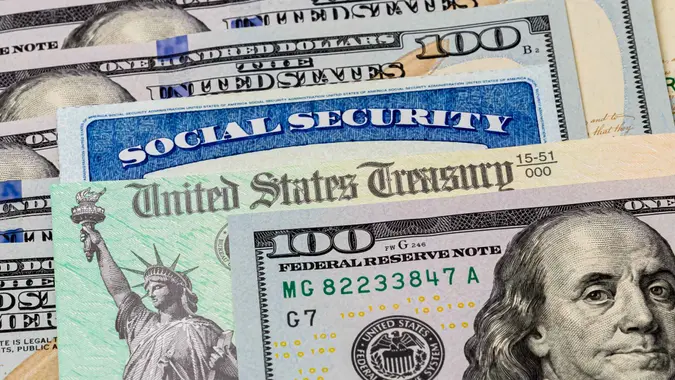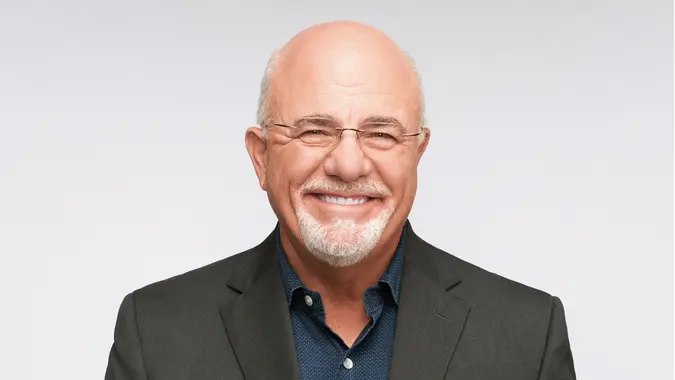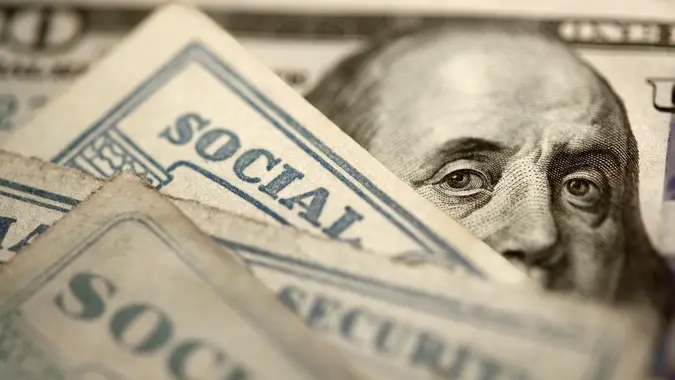Social Security and 6 Other Safety Nets You’re Taking for Granted

Commitment to Our Readers
GOBankingRates' editorial team is committed to bringing you unbiased reviews and information. We use data-driven methodologies to evaluate financial products and services - our reviews and ratings are not influenced by advertisers. You can read more about our editorial guidelines and our products and services review methodology.

20 Years
Helping You Live Richer

Reviewed
by Experts

Trusted by
Millions of Readers
The so-called social safety net is a collection of programs that supplement or support the most vulnerable Americans — low-income families, the elderly, people with disabilities, the unemployed and new parents. Some are administered directly by the federal government. In other cases, money flows from Washington to the states, which manage their own federally funded programs independently.
NEW POLL: How Much Will You Spend Over the Holidays Relative to Last Year?
Important: The Biggest Problems Facing Social Security
It’s easy to take these programs for granted, but the truth is, much of the safety net is in a precarious state. Depending on where you live, who is in power and the state of the economy, the protections that the social safety net provides are never a guarantee.
Social Security Retirement and Disability Benefits
The Social Security Administration (SSA) pays monthly benefits to about 65 million Americans. All but 10 million of those beneficiaries are from the Old-Age and Survivors Insurance (OASI) Trust Funds, according to the SSA. The rest are from the and Disability Insurance (DI) Trust Funds.
In 2020, the SSA paid out a total of just under $1.1 trillion.
It’s a progressive benefit, meaning that it is periodically increased to keep up with the cost of living. In fact, a cost-of-living adjustment (COLA) will boost Social Security payments by 5.9% in 2022, the biggest raise beneficiaries have received since 1983.
About 97% of elderly Americans receive Social Security or will at some point, according to the Center on Budget and Policy Priorities, and the program keeps millions of children and elderly people out of poverty.
The SSA states that by 2035, taxes will be able to pay for only 75% of scheduled benefits. Contrary to popular mythology, fewer births, not longer lifespans, are responsible for the cost increase.
Find Out: All You Need To Know About Collecting Social Security While Still Working
Medicare
Second only to Social Security in terms of federal spending is Medicare. The government spent $776 billion on the program in 2020 — that’s 12% of the entire federal budget. The healthcare safety net for older Americans, Medicare is paid for through the Hospital Insurance (HI) trust fund and the Supplementary Medical Insurance (SMI) trust fund.
According to the Peter G. Peterson Foundation, payroll taxes cover only 53% of Medicare’s costs. The federal government’s general fund covers the rest. Nearly 20% of the population — 63 million Americans — rely on the program.
That’s more than three times the 20 million recipients who drew from the program in 1970. That year, Medicare accounted for only 3% of federal spending instead of today’s 12%. Without changes to the current law, Medicare is on pace to gobble up a full 20% of the budget by 2051.
Worth Reading: Jaw-Dropping Stats About the State of Retirement in America
Medicaid
Medicaid is a joint program between the federal government and state governments to provide medical insurance to low-income families. Eligibility varies by state.
According to Health Management Associates, total Medicaid spending in 2020 came to $679.1 billion. According to the Kaiser Family Foundation (KFF), Medicaid accounts for $1 in every $6 spent on health care in the United States.
The Families First Coronavirus Response Act (FFCRA) authorized an increase of 6.2 percentage points in the federal match rate (“FMAP”) for states that meet certain “maintenance of eligibility” (MOE) requirements, according to the KFF.
But the burden for funding Medicaid was shifting to the federal government long before the pandemic. In 2012, federal spending supported less than 58% of Medicaid. By 2020, that number had reached nearly 68%.
Since Medicaid expansion was a centerpiece of President Obama’s Affordable Care Act (ACA), the program has become politically charged. More than 2 million low-income Americans fall into the so-called “coverage gap,” according to KFF, virtually all of whom live in states whose ant-ACA leaders opted out of Medicaid expansion.
Check Out: The Average Social Security Check the Year You Were Born
Unemployment Benefits
Expanded unemployment benefits helped millions of jobless Americans tread water throughout the pandemic. But like Medicaid, the state you live in has a lot to do with the unemployment benefits you can expect to receive should you lose your job.
According to the U.S. Department of Labor, “the CARES Act gives states the option of extending unemployment compensation to independent contractors and other workers who are ordinarily ineligible for unemployment benefits.”
Even in normal times, however, the likelihood of you taking unemployment benefits for granted depended on where you lived. According to Brookings, states have wide leeway in determining benefits and the federal government requires only the most basic protections for eligible workers.
SNAP Benefits
Nearly 40 million Americans rely on the Supplemental Nutrition Assistance Program (SNAP) — formerly known as food stamps — which is America’s primary anti-hunger program. Same as it is with Medicaid and unemployment benefits, SNAP rolls swell when times are tough.
In 2020, for example, spending on the program increased by 50%, according to the USDA.
The level of food insecurity that the poorest Americans experience has a lot to do with who holds the reigns of power. It’s politically inexpedient for either party to publicly call for cuts to the popular Medicare and Social Security programs, but nutritional assistance is rarely as controversial. In 2020, a federal judge blocked President Trump’s attempt to cut SNAP benefits to 700,000 recipients.
TANF Benefits
Temporary Assistance for Needy Families (TANF) is a federal grant that helps fund state-administered programs that offer things like childcare assistance and work assistance. Eligibility requirements vary, but all recipients must either have a child, be pregnant, or be the head of a household at or under the age of 18.
Like so many other programs for the most vulnerable Americans, TANF was a crucial building block of the government’s COVID relief efforts — but that still wasn’t enough. According to the Center on Budget and Policy Priorities, the program’s benefits remain far too low to meet the national need. Benefits declined by at least 20% in 33 states and TANF is now “at its weakest point in the program’s history in most states.”
Parental Leave
The biggest hole in America’s social safety net fails millions of people at precisely the time when they need the most help — when they have babies. America is still the only wealthy nation on Earth that has no national paid parental leave law. The 1993 Family and Medical Leave Act (FMLA) provides up to 12 weeks of unpaid parental leave, an empty guarantee for the millions of low-wage workers who simply can’t afford to take unpaid time off.
Despite overwhelming public support for national protections, only a handful of states require employers to provide paid family leave, according to KFF, and the vast majority of workers do not receive paid parental leave from their employers.
Up Next: The Best and Worst Ways Your Tax Dollars Are Spent
 Written by
Written by 

























